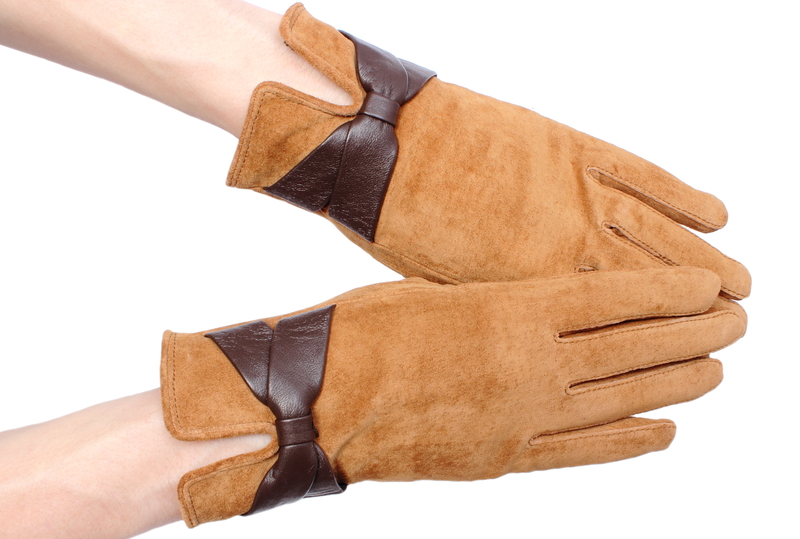Looking After Leather: Can Steam Cleaning Be Effective
Posted on 24/09/2025
Looking After Leather: Can Steam Cleaning Be Effective?
Leather is a timeless material prized for its natural elegance, durability, and luxurious feel. From classic leather jackets and designer handbags to plush upholstery and car interiors, leather products require proper care and attention to keep them looking their best. As cleaning solutions evolve, you may wonder: Can steam cleaning be effective for looking after leather? In this comprehensive article, we examine whether steam cleaning is a friend or foe to your cherished leather items and provide valuable tips for maintaining leather's beauty.

Understanding Leather and Its Unique Cleaning Needs
Before diving into methods like steam cleaning, it's essential to understand what leather is and why it's different from other materials. Leather is a natural product made from the hides of animals-most commonly cows. Its natural fibers give it strength, breathability, and a unique character, but also make it susceptible to damage from moisture, heat, and harsh chemicals.
- Finished Leather - This type of leather is coated with a protective layer (like polyurethane) that makes it more resistant to stains and water. Most leather furniture and car seats fall under this category.
- Unfinished Leather - This includes aniline, suede, and nubuck, which are more porous and vulnerable to stains and moisture.
- Conditioning and pH Levels - Leather needs to be kept supple through conditioning, and it can be easily damaged by incorrect pH-balanced cleaning products.
Key Takeaway: Leather is not the same as vinyl or fabric; its cleaning and care require specific, gentle approaches.
Common Methods for Cleaning Leather
To keep leather items looking pristine, a variety of cleaning methods are available. Here's a quick overview:
- Dry Dusting: Using a microfiber cloth to remove dust and debris from the surface.
- Spot Cleaning: Addressing small stains with a damp cloth and mild soap.
- Leather Conditioners: Applying specialized creams or oils to nourish and protect the leather.
- Professional Cleaning: Hiring expert leather cleaners for restoration and deep cleaning.
Over recent years, steam cleaning has gained popularity as a possible fast, chemical-free way to refresh and sanitize surfaces. But what about when it comes to looking after leather?
What Is Steam Cleaning and How Does It Work?
Steam cleaning involves using a machine to produce high-temperature steam, which can penetrate fabrics and surfaces to loosen dirt, grime, and bacteria. The idea is that the heat and moisture together clean effectively, often with no additional chemicals required.
Benefits of Steam Cleaning:
- Sanitizes surfaces by killing bacteria, viruses, and dust mites.
- No harsh chemicals required, making it an eco-friendly option.
- Effective for cleaning hard-to-reach areas and stubborn grime.
It's easy to see why steam cleaning has become popular for tiles, fabric, and carpets. But does this method translate well for leather care?
Is Steam Cleaning Effective for Leather?
The answer is both yes and no, depending on several factors:
- Type of Leather: Finished leather (with a protective surface) may handle occasional cautious steam cleaning, while unfinished leather can be badly damaged by moisture.
- Condition of Leather: Older, dry, or cracked leather is more likely to suffer damage from intense heat and steam.
- Steam Application: Direct, prolonged steam or excessive moisture is risky. Gentle, controlled application may be less harmful for finished leather but is rarely recommended for delicate or high-end items.
Bottom Line: Steam cleaning can, in some cases, remove surface dirt and bacteria from treated leather, but there are significant risks involved. If not done with extreme caution, the process may cause the leather to dry out, crack, shrink, or even deteriorate.
Potential Risks of Steam Cleaning Leather
Before attempting steam cleaning on your leather possessions, consider these important caveats:
- Loss of Natural Oils: Steam can strip leather of its essential oils, resulting in dryness and brittleness.
- Staining and Discoloration: High heat and moisture may alter the color or finish, leaving behind water spots or uneven patches.
- Warping and Shrinking: Leather expands with moisture, but once it dries rapidly under heat, it may shrink or lose its original shape.
- Mold and Mildew: Excess moisture can seep into the leather, encouraging mold growth deep in the fibers if not dried properly.
- Damage to Seams and Stitching: Prolonged steam can weaken the threads and adhesives used in leather upholstery or accessories.
In summary: While steam cleaning might appear to sanitize or clean leather quickly, the risks usually outweigh the benefits, and many manufacturers expressly advise against it.
Manufacturer Guidance: What Do Leather Experts Say?
Most reputable leather goods manufacturers and professional leather cleaners do not recommend steam cleaning for routine maintenance. Many warranty cards even warn that using steam or excessive water can void coverage.
Why? Steam is unpredictable and inconsistent when used outside controlled, professional settings. Even seasoned experts rarely opt for steam unless dealing with specific, stubborn stains on robust, finished leather (and even then, with special tools and minimal moisture).
Manufacturers' advice:
Maintain leather's appearance and longevity by dusting regularly, conditioning with approved products, and spot-cleaning with damp (not wet) cloths as needed.
Safe and Effective Ways to Clean and Maintain Leather
1. Regular Dusting and Vacuuming
Use a soft, dry microfiber cloth or a vacuum with a soft brush attachment to remove dust and crumbs from leather's surface and crevices. This simple habit prevents dirt from embedding into pores and reduces abrasion.
2. Gentle Spot Cleaning
For spills or surface stains, dampen a clean cloth with lukewarm water (distilled is best) and blot the area gently. Add a drop of mild, pH-neutral soap if needed. Avoid soaking the leather. Wipe away residue with a dry cloth and allow to air dry away from direct sunlight or heat.
3. Conditioning the Leather
Keep leather supple and protected with a high-quality conditioner designed for the specific type of leather you own. Conditioning 2-4 times per year helps maintain flexibility, color, and tear-resistance. Never use oils not made for leather (like olive oil), which can clog pores and attract dust.
4. Professional Leather Cleaning
If your leather item is heavily soiled, stained, or valuable, consult a professional leather cleaner. Experts can use specialized tools and products to restore color, remove tough stains, and repair minor damage without resorting to risky techniques like excessive steam cleaning.
When Might Steam Cleaning Leather Be Justified?
There are a few, limited scenarios where a very gentle steam-clean might be considered:
- Automotive Detailing: Steamers built for auto interiors, with precise pressure and minimal moisture settings, can be used for light sanitizing of finished car leather. It must be followed by immediate drying and re-conditioning.
- Professional Restoration: In rare, controlled cases, pros may employ steam (at a safe distance and low output) to help extract set-in grime before conditioning.
Even in these cases, steam is never the primary cleaning method and should only be used by those well-versed in leather care.
DIY Alternatives to Steam Cleaning Leather
- Lukewarm Damp Cloth: Best for freshening up and lifting light dirt.
- Leather Cleaner Wipes: Pre-moistened wipes formulated for leather offer convenient, safe touch-ups.
- Homemade Cleaner: Mix equal parts distilled water and white vinegar, apply sparingly with a cloth, then buff dry.
- Commercial Leather Soap: Soap or foam cleansers from reputable leather brands help safely dissolve grease and residue.
Remember to always test any cleaning solution in an inconspicuous area before applying to the entire surface.
Best Practices for Long-Term Leather Care
- Keep out of direct sunlight and away from heat sources to prevent drying and cracking.
- Rotate and reposition furniture (or handbags in storage) to promote even wear.
- Store in breathable space (not plastic bags!) to allow airflow and prevent mildew.
- Shield from spills and stains by using slipcovers, protecting sprays (for finished leather), and treating stains immediately.

Conclusion: Can Steam Cleaning Be Effective for Leather?
In summary, while steam cleaning is widely used for deep-cleaning fabrics, tiles, and carpets, it is not the ideal or safest choice for caring for most leather goods. The risks-including dryness, staining, shrinking, and diminished leather lifespan-often outweigh the temporary sanitation benefits.
For looking after leather, the most effective strategies involve gentle cleaning, regular conditioning, and prompt spot removal. Professional assistance should be sought for restoration or stubborn dirt. When in doubt, always refer to your manufacturer's care instructions.
Your beloved leather goods deserve specialized care and attention. Avoid shortcuts like steam cleaning unless recommended by experts, and they'll reward you with comfort, beauty, and longevity for years to come.
FAQs About Steam Cleaning Leather
-
Can I use a household steamer on my leather sofa?
It is not recommended. Even low-moisture steamers can damage the finish, cause streaking, or promote mildew growth. Stick to dry dusting or approved leather cleaners. -
Does steam cleaning remove odors from leather?
Steam might help neutralize some surface odors, but it can also lock in smells if moisture penetrates deep within the leather. Safer alternatives exist, like leather-safe deodorizing sprays. -
How often should I clean and condition leather?
Dust weekly, spot-clean as needed, and condition every 3-6 months or per the item's usage and climate. -
What's the best way to keep leather looking new?
Gentle cleaning, regular conditioning, and protection from sunlight, heat, and spills. Avoid harsh or aggressive cleaning methods.
For more tips on looking after leather or to find safe cleaning products, consult your item's manufacturer or a professional leather care specialist.





